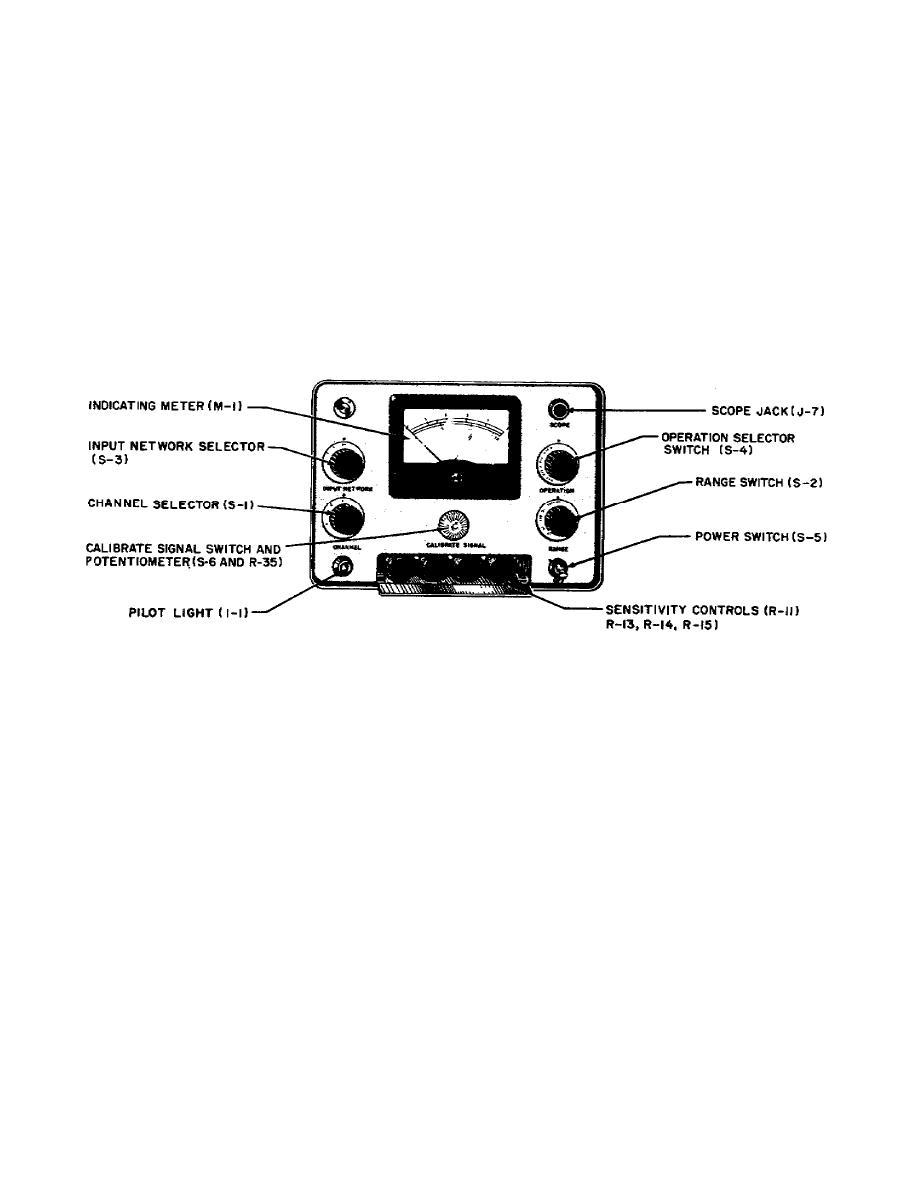
SM0486
5.
VIBRATION METER 1-117
a. This meter is a small, portable precision instrument which, if used in
conjunction with self-generating or torsional pickups, measures the average
velocity and peak-to-peak displacement of mechanical vibrations.
Vibration
frequency can be calculated from the velocity and displacement settings.
The
instrument has four input channels, each of which accommodates any self-generating
pickup with characteristics compatible with the meter.
Sensitivity controls
independently adjust each channel to the type of pickup being used. The output of
the selected channel is normally read on the meter directly, either as displacement
(peak-to-peak distance in miles) or average velocity (inches per second).
Let's
examine the meter panel controls and the operation and calibration of the meter.
Figure 3.
Vibration Meter Front Panel
b. Panel Controls.
All of the operating controls are placed on the front
panel of the instrument. The scope jack J-7, indicating meter, a pilot light, and
the power switch S-5 are also located on this panel. These controls, switches, and
the indicator can be seen in Figure 3.
(1) Indicating meter M-1 reads average vibrating velocity in inches per
second or tens of degrees per second. It also reads peak-to-peak displacement of
vibratory motion in thousandths of an inch (mils) or hundredths of a degree.
Values are read from the upper or lower scale, depending on the range selector
setting.
Either average velocity or peak-to-peak displacement is indicated,
depending on the operation selector (S-4) setting.
(2) A channel selector (S-1 in Figure 3) connects any one of four vibration
pickup channels (and its sensitivity control) to the amplifier
111



 Previous Page
Previous Page
